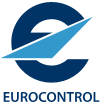RECAT-EU now in use at Paris Charles de Gaulle

The new European separation standard for aircraft wake turbulence - developed by EUROCONTROL and called European Wake Vortex Re-categorisation (RECAT-EU) - is now being used by air traffic control at Paris Charles de Gaulle (CDG). 24/7 operations started on 22 March 2016 for arrivals and departures of airborne aircraft at both Paris CDG and Le Bourget.
Paris CDG confirms that RECAT-EU heightens resilience and flexibility in separation provision. The airport authorities have seen no negative impact on controller workload, or any increase in the rate of wake encounter reports.
François Verhaeghe, Tower Supervisor at Paris CDG, noted: “RECAT-EU improves flexibility and facilitates controllers’ tasks.”
“RECAT-EU is highly beneficial in peak hours. It gives us more flexibility in traffic separation delivery and has a positive impact on go-arounds,” added Magali Kintzler, Paris CDG’s Air Traffic Control Manager.
Preparation
To reach this milestone, France’s largest international airport needed to carry out a local safety case. This helped Paris CDG address the few system adaptations required for the proper operation of RECAT-EU. These are typically adaptation of the flight plan processing system for converting ICAO flight plan wake turbulence categories into local RECAT category codes, Flight Strips and Controller Surveillance HMI (human machine interface) updates to display RECAT category codes.
Air Traffic Controllers received specialised training to familiarise themselves with potential changes to their normal operations. Communication with pilots should not be affected as the International Civil Aviation Organisation (ICAO) phraseology of “HEAVY” and “SUPER” types remain the same in RECAT-EU. To support pilots’ awareness of RECAT-EU changes, the EUROCONTROL Training Institute (IANS) provides a helpful online tutorial.
Background
RECAT-EU is the result of fruitful collaboration between EUROCONTROL and its stakeholders. It received a formal endorsement of its safety case from the European Aviation Safety Agency (EASA) in October 2014.
This new, more precise categorisation of aircraft splits the current International Civil Aviation Organisation (ICAO) “HEAVY” and “MEDIUM” categories into ‘UPPER’ and ‘LOWER’ sub-categories. A new SUPER HEAVY category that fully integrates aircraft - such as the A380 - was also created.
The Network Manager's objective is to secure widespread deployment of RECAT-EU in order to deliver aggregate Network benefits in terms of efficiency, capacity and quicker recovery from adverse conditions.







.png)
.jpg)
Comments
There are no comments yet for this item
Join the discussion